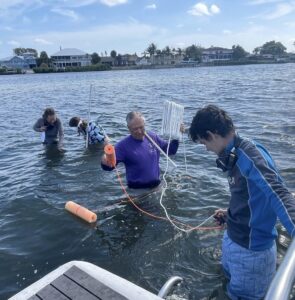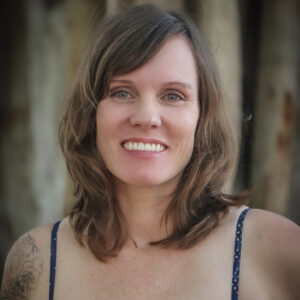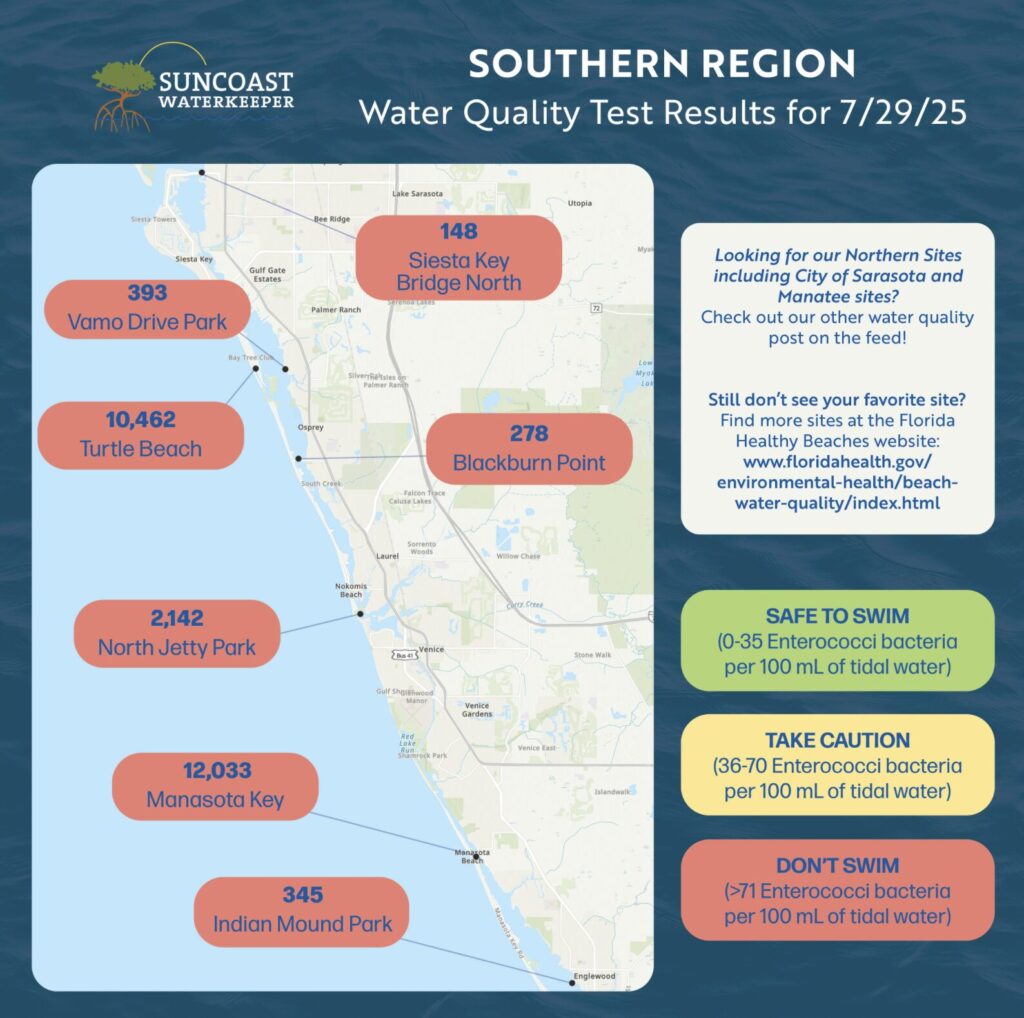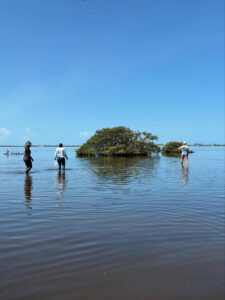Seven locations in Southern Sarasota Bay area should have ‘no swim’ advisories, the non-profit says.
By Kylee Worth
Original Air Date: August 6, 2025
Host: Sarasota beaches are consistently ranked among the best in the United States, with tourists and locals alike regarding the crystal clear water as a hit. However, recent research from Suncoast Waterkeeper found that nearby bay waters are actually full of fecal bacteria. Kylee Worth reports.
 Kylee Worth: Suncoast Waterkeeper is a non-profit active in Sarasota and Manatee County. Its mission: Protect and restore local waters for the benefit of all. For the past five years, they have been monitoring fecal indicator bacteria along bay shores and other waterways the state does not monitor. Thanks to the support of the Charles and Margery Barancik Foundation, Suncoast Waterkeeper is expanding their work south. Dr. Abbey Tyrna is the executive director, and she explains what the expansion looks like.
Kylee Worth: Suncoast Waterkeeper is a non-profit active in Sarasota and Manatee County. Its mission: Protect and restore local waters for the benefit of all. For the past five years, they have been monitoring fecal indicator bacteria along bay shores and other waterways the state does not monitor. Thanks to the support of the Charles and Margery Barancik Foundation, Suncoast Waterkeeper is expanding their work south. Dr. Abbey Tyrna is the executive director, and she explains what the expansion looks like.

Dr. Abbey Tyrna
Abbey Tyrna: We started monitoring places like the north bridge of Siesta Key, where there’s a lot of recreational activity, from swimming to wade fishing to paddling; and Turtle Beach, where there’s also a lot of recreational activity. And, while I’m saying beaches, we’re actually monitoring the bayside. The Florida Department of Health does a really good job monitoring our gulfside beaches, but no one is really doing our bayside locations.
KW: In the 2010’s, the Florida Department of Health made budget cuts that left gaps in their beach monitoring programs. With only five high-profile bay locations left in Sarasota and Manatee counties, Suncoast Waterkeeper filled the gap. They go out on the water at the beginning of every week to collect samples and publish the results on their Facebook page that Friday. Unlike the Florida Department of Health, they are unable to create advisories. However, through their research, they are able to determine when advisories would be issued if the state were monitoring those waters.
 In the Waterkeeper’s first test results for the southern area, all seven new monitoring spots were bright red, which means no-swim advisories. The Facebook post on August 1 triggered comments expressing shock and disgust.
In the Waterkeeper’s first test results for the southern area, all seven new monitoring spots were bright red, which means no-swim advisories. The Facebook post on August 1 triggered comments expressing shock and disgust.
AT: In Sarasota, we found that there are areas that have consistently high levels of fecal indicator bacteria, and as a result, there really should be warning signs posted. What we found through our five years of monitoring is that, after rain events, there’s going to be high levels of fecal indicator bacteria. Really, just having a sign warning people that’s the case can really help save people from getting infections or having gastrointestinal issues after recreating in Bay locations.
KW: Suncoast Waterkeeper found that all of their testing sites in southern Sarasota were unsafe for swimming. A bayside spot on Manasota Key showed 340 times the recommended safe swimming limit of fecal indicator bacteria. Abbey Tyrna delves into the science behind this.
AT: If you see decomposing vegetation like seagrass or algae on the shoreline, that is a hotbed for bacteria. The bacteria we test for can grow outside of the host’s body, so it can grow outside of a dog or a bird or a human or a horse if the conditions are right. In those places where vegetation are decomposing, those are the best places for them to grow and multiply.
 KW: Tyrna noted that the day before collecting samples, it rained, likely increasing the amount of fecal indicator bacteria that was found. With the right level of funding, these weather patterns can be closer studied.
KW: Tyrna noted that the day before collecting samples, it rained, likely increasing the amount of fecal indicator bacteria that was found. With the right level of funding, these weather patterns can be closer studied.
Tyrna says that, with budget cuts to water quality programs such as Florida’s Healthy Beaches, it seems like it’s up to the locals to continue their work.
AT: We’re hopeful that the federal and state cuts to water quality programs don’t affect the Healthy Beaches Program, but if they do, we are positioned to take up that endeavor as well if necessary.
KW: Suncoast Waterkeeper’s next step in their journey of protecting local water is to get in touch with listeners like you. You could point them to a location you’re concerned about, for example.
AT: We’re hoping that the people will help us with where they like to recreate in the Venice, South Sarasota, North Port areas so that we can make sure that they have the right information on fecal indicator bacteria so that they know before they go into the water and swim.
 KW: These requests can be made through email, which can be found on their website, as well their social media, where they frequently post asking for feedback regarding their locations. That’s Suncoast Waterkeeper on Instagram and Facebook. Be sure to follow and check their water quality updates before you decide to take a load off at your favorite beach spot.
KW: These requests can be made through email, which can be found on their website, as well their social media, where they frequently post asking for feedback regarding their locations. That’s Suncoast Waterkeeper on Instagram and Facebook. Be sure to follow and check their water quality updates before you decide to take a load off at your favorite beach spot.
This has been Kylee Worth with your WSLR News.
WSLR News aims to keep the local community informed with our 1/2 hour local news show, quarterly newspaper and social media feeds. The local news broadcast airs on Wednesdays and Fridays at 6pm.